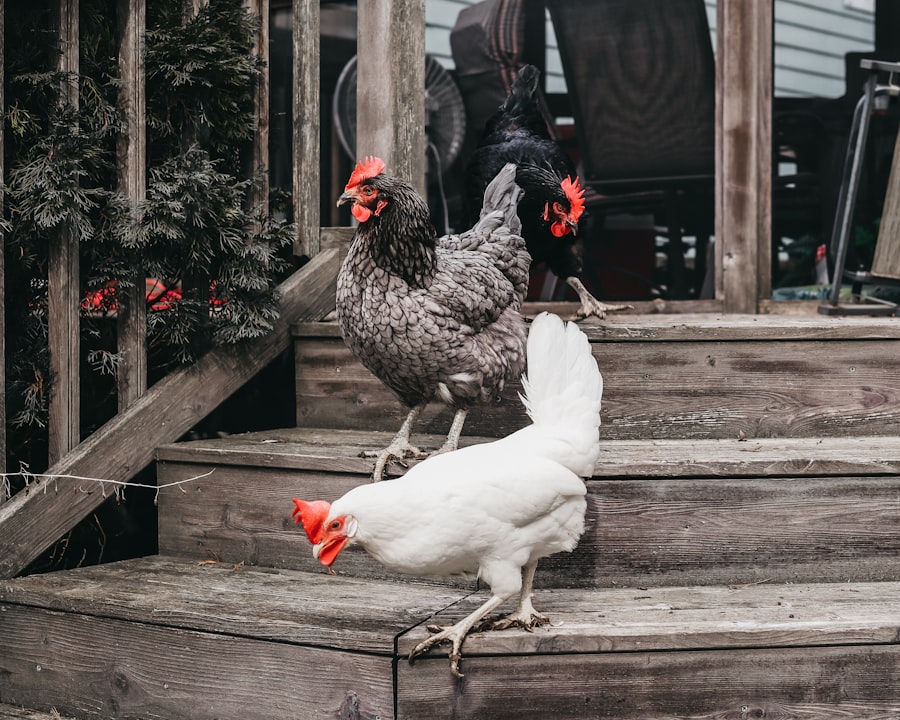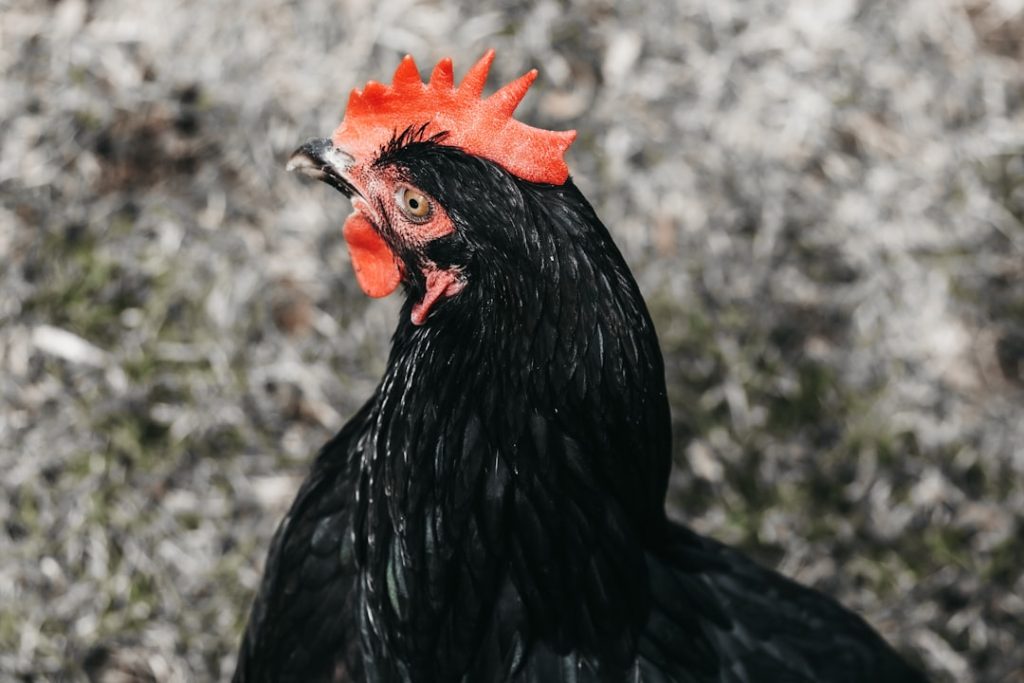Foxes are natural predators of chickens and pose a significant threat to backyard flocks. These intelligent and agile animals are known for their ability to infiltrate chicken coops and capture birds. Foxes are most active during dawn and dusk, making free-ranging chickens particularly vulnerable during these times.
Their ability to dig under fences and squeeze through small openings makes it challenging to secure chicken coops against them. Foxes employ stealthy hunting techniques and can often circumvent traditional coop defenses. They not only threaten adult chickens but also target eggs and chicks, potentially impacting the overall productivity and health of the flock.
Even when chickens are secured at night, foxes may still pose a risk to other aspects of poultry keeping. Understanding fox behavior and habits is crucial for chicken owners to implement effective protection measures for their flocks. Recognizing the multifaceted threat that foxes present is the first step in developing comprehensive strategies to safeguard backyard chickens.
Table of Contents
- 1 Securing the coop: Building a fox-proof enclosure
- 2 Using deterrents: Scents and sounds to keep foxes away
- 3 Nighttime protection: Locking up the chickens safely
- 4 Supervised free-range time: Allowing chickens to roam safely
- 5 Training guard animals: Using dogs or other animals to protect the flock
- 6 Community awareness: Working with neighbors to keep foxes at bay
- 7 FAQs
Key Takeaways
- Foxes pose a significant threat to chickens and other small animals
- Building a fox-proof enclosure is essential for keeping chickens safe
- Scents and sounds can be used as deterrents to keep foxes away from the coop
- Locking up chickens safely at night is crucial for protecting them from fox attacks
- Allowing chickens to roam safely under supervision is important for their well-being and safety
Securing the coop: Building a fox-proof enclosure
Securing the Perimeter
One of the most critical aspects of building a fox-proof enclosure is securing the perimeter. This can be achieved by burying wire mesh around the coop to prevent foxes from digging underneath. Additionally, using hardware cloth with small openings can prevent foxes from squeezing through any gaps in the fencing.
Fortifying the Coop
In addition to securing the perimeter, it’s essential to fortify the coop itself. This can be done by using heavy-duty locks and latches on all doors and windows to prevent foxes from gaining access. Solid materials such as wood or metal should be used for the construction of the coop to prevent foxes from chewing or clawing their way in.
Planning and Attention to Detail
Building a fox-proof enclosure requires careful planning and attention to detail. By following these guidelines and using the right materials, you can create a safe and secure environment for your backyard flock, protecting them from the cunning fox.
Using deterrents: Scents and sounds to keep foxes away

In addition to building a secure enclosure, using deterrents can help keep foxes away from a backyard flock. One effective deterrent is the use of scents that are unpleasant to foxes, such as predator urine or citrus oils. These scents can be sprayed around the perimeter of the coop to create a barrier that deters foxes from approaching.
Another effective deterrent is the use of loud sounds, such as motion-activated alarms or radios, which can startle and deter foxes from coming near the coop. It’s important to note that while deterrents can be effective, they may need to be rotated or changed periodically to prevent foxes from becoming accustomed to them. This means using a variety of scents and sounds to keep foxes on their toes and prevent them from getting too comfortable in the area.
Using deterrents in conjunction with a secure enclosure can provide an extra layer of protection for a backyard flock.
Nighttime protection: Locking up the chickens safely
One of the most important aspects of protecting a backyard flock from foxes is ensuring that the chickens are safely locked up at night. This means using sturdy locks and latches on all doors and windows of the coop to prevent foxes from gaining access. It’s also important to conduct regular checks of the coop at night to ensure that all doors and windows are securely closed.
In addition, it’s important to provide a safe and comfortable roosting area for the chickens inside the coop, where they can rest peacefully without fear of foxes. It’s also important to consider the placement of the coop in relation to potential fox dens or hunting grounds. Placing the coop in a well-lit area or near human activity can help deter foxes from approaching at night.
It’s also important to remove any potential food sources, such as spilled grain or garbage, from around the coop to prevent attracting foxes. By taking these precautions and locking up the chickens safely at night, chicken owners can help protect their flock from nocturnal predators like foxes.
Supervised free-range time: Allowing chickens to roam safely
While it’s important to keep chickens safely locked up at night, it’s also beneficial for their well-being to allow them some supervised free-range time during the day. This allows the chickens to engage in natural behaviors such as foraging and dust bathing, which can contribute to their overall health and happiness. However, it’s important to supervise free-range time to ensure that the chickens are safe from potential predators like foxes.
Supervised free-range time may involve setting up temporary fencing or using chicken tractors to create a safe area for the chickens to roam. It’s also important to keep an eye on the chickens while they are free-ranging to ensure that they are not straying too far from the safety of the coop. By allowing chickens some supervised free-range time, chicken owners can provide them with opportunities for natural behaviors while still keeping them safe from predators like foxes.
Training guard animals: Using dogs or other animals to protect the flock

Training Dogs as Guard Animals
One effective way to safeguard your backyard flock from foxes is by training dogs to protect your chickens. Many breeds of dogs possess natural instincts for protecting livestock and can be trained to patrol the perimeter of the coop, deterring potential predators like foxes. It’s essential to select a breed of dog that is well-suited for guarding chickens and has a calm temperament around livestock.
Other Effective Guard Animals
In addition to dogs, other animals such as geese or llamas can also serve as effective guard animals for protecting chickens from predators like foxes. These animals have natural instincts for protecting their flock and can be effective at deterring potential threats.
Providing an Extra Layer of Security
By training guard animals to protect the flock, chicken owners can provide an extra layer of security for their chickens against predators like foxes. This added protection can give you peace of mind and help ensure the safety of your backyard flock.
Community awareness: Working with neighbors to keep foxes at bay
Finally, working with neighbors and community members can be an effective way to keep foxes at bay and protect backyard flocks. By sharing information about fox activity and coordinating efforts to deter them, neighbors can work together to create a safer environment for their chickens. This may involve sharing tips for securing coops, using deterrents, and training guard animals.
In addition, community members can work together to address any potential attractants for foxes in the area, such as unsecured garbage or pet food left outside. By working together, neighbors can create a united front against foxes and help protect their backyard flocks from these cunning predators. Community awareness and collaboration can be an effective way to keep foxes at bay and create a safer environment for backyard chickens.
In conclusion, protecting a backyard flock from foxes requires a multi-faceted approach that includes understanding the threat, securing the coop, using deterrents, providing nighttime protection, allowing supervised free-range time, training guard animals, and working with neighbors. By taking these precautions and implementing these strategies, chicken owners can help keep their flock safe from these cunning predators and create a secure environment for their chickens to thrive.
If you’re looking for tips on how to keep your chickens safe from foxes, you might also be interested in learning about different types of chicken coops. Check out this article on chicken coop designs in Grand Island, NE for some inspiration on how to create a secure and comfortable living space for your feathered friends.
FAQs
What are the main threats to chickens from foxes?
Foxes are a common predator of chickens and pose a significant threat to their safety. Foxes are known for their ability to dig under fences, climb over obstacles, and even break into coops to access chickens.
How can I protect my chickens from foxes?
There are several measures you can take to protect your chickens from foxes. These include securing the coop with strong wire mesh, burying the wire mesh at least 12 inches underground to prevent digging, installing motion-activated lights or alarms, and using guard animals such as dogs or llamas to deter foxes.
Are there any natural deterrents for foxes?
Some natural deterrents for foxes include using strong-smelling plants such as lavender, garlic, or marigolds around the coop, as well as using predator urine or scents to create a barrier around the chicken area.
What should I do if I suspect a fox is targeting my chickens?
If you suspect a fox is targeting your chickens, it’s important to take immediate action to protect them. This may include reinforcing the coop, setting up traps, or contacting local wildlife authorities for assistance.
Are there any specific breeds of chickens that are more fox-resistant?
While no breed of chicken is completely immune to fox attacks, some breeds are known to be more alert and better at defending themselves. Breeds such as the Rhode Island Red, Plymouth Rock, and Sussex are known for their alertness and ability to fend off predators.
Meet Walter, the feathered-friend fanatic of Florida! Nestled in the sunshine state, Walter struts through life with his feathered companions, clucking his way to happiness. With a coop that’s fancier than a five-star hotel, he’s the Don Juan of the chicken world. When he’s not teaching his hens to do the cha-cha, you’ll find him in a heated debate with his prized rooster, Sir Clucks-a-Lot. Walter’s poultry passion is no yolk; he’s the sunny-side-up guy you never knew you needed in your flock of friends!







